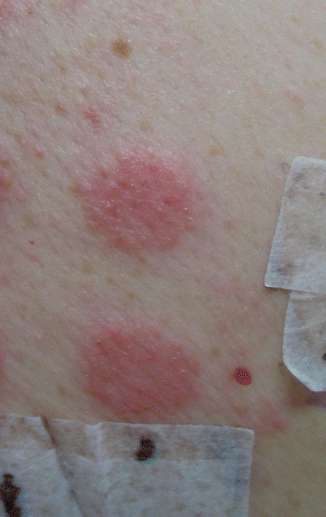Material
Subtypes
Main allergens
Leather
Chromium
Rubber
Natural rubber latex (NRL)
NRL, rubber additives
Nitrile
Rubber additives
Other synthetic rubber
Rubber additives
Plastic
Polyvinyl chloride (PVC)
Large number of rare allergens
Rubber gloves have long been the main cause of delayed rubber chemical allergy, and the main sensitizers include thiurams, dithiocarbamates and benzothiazoles (Table 19.2). Both natural and synthetic rubbers contain these additives. Table 19.3 contains other sensitizing chemicals in rubber gloves.
Table 19.2
Allergens in the rubber additive series with possible relevance to glove allergy
Rubber additive series | |
|---|---|
Main allergens | Comments |
Thiuram mix components: | Patients should avoid both thiurams and dithiocarbamates |
Tetraethylthiuram disulfide (TETD) | |
Tetramethylthiuram monosulfide (TMTM) | |
Tetramethylthiuram disulfide (TMTD) | |
Dipentamethylenethiuram disulfide (PTD) | |
Mercapto mix components (benzothiazoles): | Quite commonly used in rubber gloves |
N-Cyclohexyl-2-benzothiazylsulfenamide (CBS) | Patients should avoid all benzothiazoles |
Morpholinylmercaptobenzothiazole (MOR) | |
Dibenzothiazyl disulfide (MBTS) | |
2-Mercaptobenzothiazole (MBT) | |
Dithiocarbamates: | Used in the production of most rubber gloves |
Zinc diethyldithiocarbamate (ZDC) | Patients should avoid both thiurams and dithiocarbamates |
Zinc dibutyldithiocarbamate (DBC) | |
Zinc dimethyldithiocarbamate | |
Rare allergens | |
1,3-Diphenylguanidine (DPG) | Used in some rubber gloves, usually together with benzothiazoles |
Irritant patch test reactions very common | |
Alkylthioureas: | Mainly in neoprene gloves |
N,N’-Diethylthiourea | Also used in the production of other types of rubber |
N,N’-Dibutylthiourea | |
N,N’-Diphenylthiourea | |
N-Isopropyl-N-phenyl-4-phenylenediamine (IPPD) | Possibly in some black/dark coloured gloves for industrial use |
N-cyclohexyl-N-phenyl-4-phenylenediamine (CPPD) | |
Cyclohexylthiophthalimide | Possibly in some gloves |
Irritant patch test reactions common | |
Table 19.3
Rare commercial glove allergens in plastic and rubber gloves
Allergen | Source of sensitization | Reference |
|---|---|---|
Cetylpyridinium chloride | NRL Synthetic polyisoprene | [8] |
Bisphenol A | PVC gloves | [11] |
Benzisothiazolinone | In some powder-free PVC gloves | [12] |
Tricresyl phosphate | PVC gloves | [13] |
Formaldehyde | May occur in reusable PVC and rubber gloves with flocked lining | [14] |
Immediate allergy to the proteins of natural rubber latex is mostly caused by natural rubber gloves. Healthcare workers are a major risk group for occupational sensitization. This allergy has, however, become quite rare in several European countries, for example, in Germany [4].
Plastic gloves may also cause delayed contact allergy. Most reported cases have been due to polyvinyl chloride (PVC) gloves. The reported allergens have been additives such as plasticizers, antioxidants, antimicrobials or colouring agents [5]. None of the allergens in PVC gloves have had worldwide importance, probably because they vary greatly and can be easily replaced by other compounds. Table 19.3 contains some of the rare allergens that are available as commercial allergens. The actual sensitizer in plastic gloves often remains undetermined [2] (Fig. 19.1).


Fig. 19.1
Allergic patch test reactions to a polyvinyl chloride (PVC) glove in a patient with benzisothiazolinone (BIT) allergy and skin symptoms related to the use of these gloves. BIT was detected in the chemical analysis of the gloves
Colouring agents are also rare causes of delayed contact allergy in textile and leather gloves.
19.5 Diagnosis
Most patients with suspected glove allergy need patch testing (Table 19.4). If they have used NRL gloves, a prick test or determination of specific IgE in the sera must be performed, especially when contact urticaria is suspected.
Table 19.4
Basic screening of glove allergy
Test method | What to test |
|---|---|
Patch tests | European baseline series
Stay updated, free articles. Join our Telegram channel
Full access? Get Clinical Tree
 Get Clinical Tree app for offline access
Get Clinical Tree app for offline access

|




